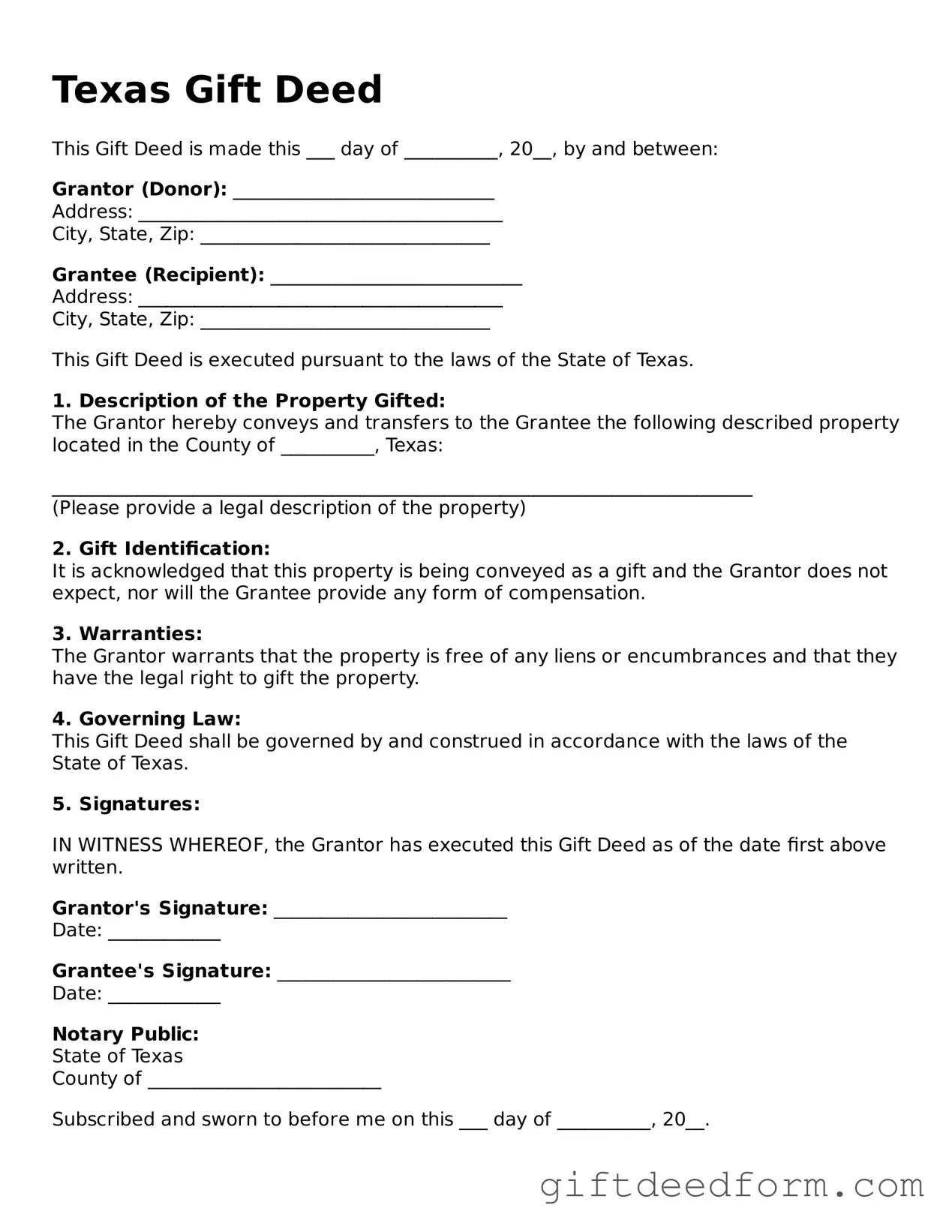Filling out the Texas Gift Deed form can seem straightforward, but many people make common mistakes that can lead to complications. One frequent error is not providing complete and accurate property descriptions. The property must be clearly identified, including its legal description. Omitting this detail can cause confusion and disputes later on.
Another mistake is failing to include the correct names of the parties involved. Both the donor and the recipient must be identified properly. If there are any discrepancies in the names, such as misspellings or using nicknames, it could invalidate the deed.
People often forget to sign the document. A Gift Deed must be signed by the donor to be legally binding. In some cases, individuals assume that a verbal agreement is sufficient, but without a signature, the deed holds no legal weight.
Additionally, not having the deed notarized is a common oversight. In Texas, a Gift Deed must be acknowledged before a notary public to ensure its validity. Skipping this step can lead to challenges in proving the deed’s authenticity.
Some individuals mistakenly believe that a Gift Deed does not require witnesses. However, while Texas does not mandate witnesses for a Gift Deed, having them can provide additional proof if disputes arise. It’s better to err on the side of caution.
Another mistake is neglecting to consider tax implications. While gifts may not always be taxable, failing to understand the potential tax consequences can lead to unexpected financial burdens. Consulting with a tax professional can help clarify these issues.
People also often overlook the need to record the Gift Deed with the county clerk. Even if the deed is completed correctly, it must be filed to put the public on notice of the transfer. Without this step, the deed may not protect the recipient's ownership rights.
Lastly, many individuals do not keep a copy of the completed Gift Deed for their records. Retaining a copy is essential for future reference and can be critical if any questions about the gift arise. Always ensure you have documentation of the transaction.
